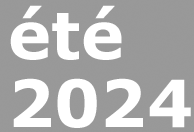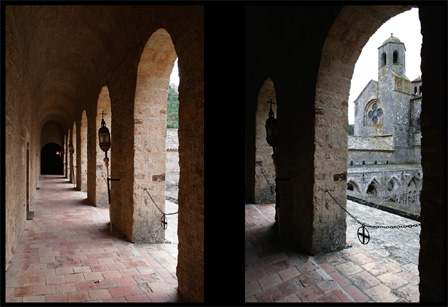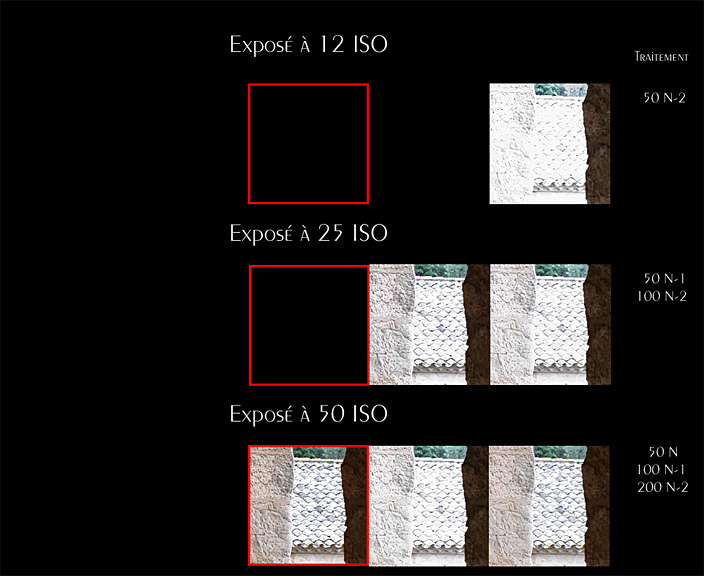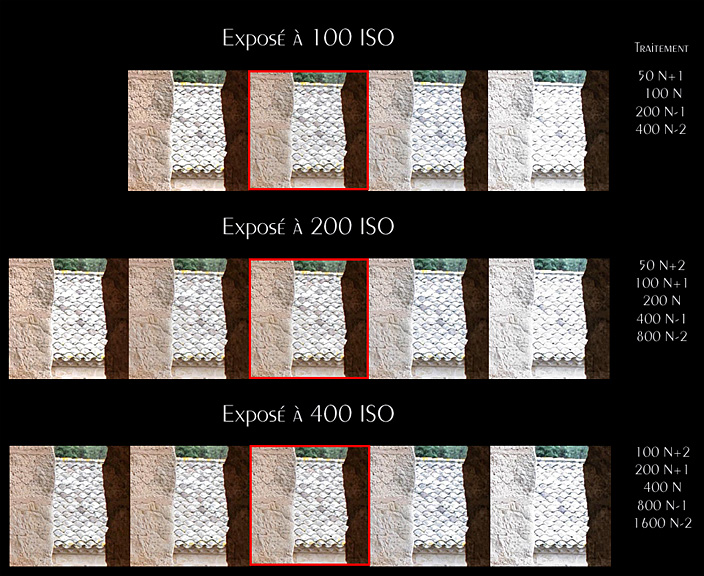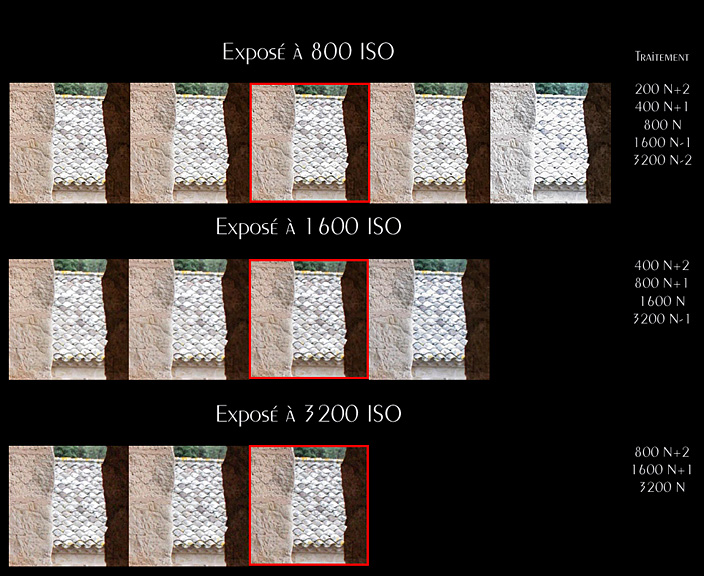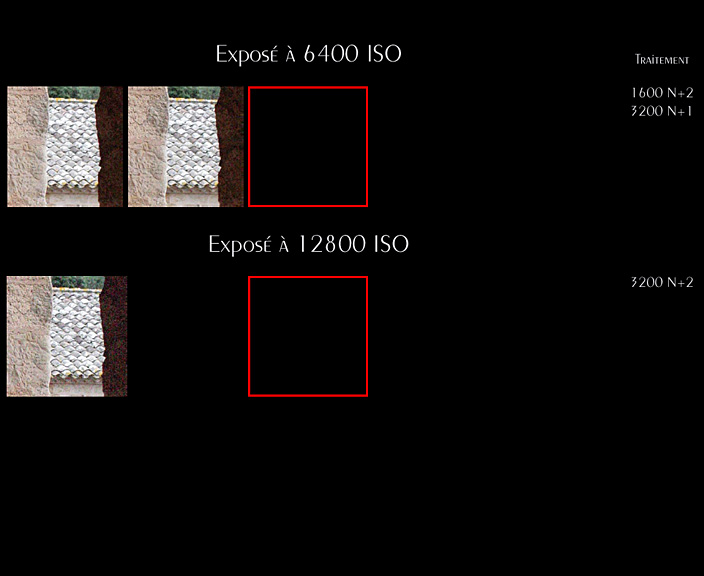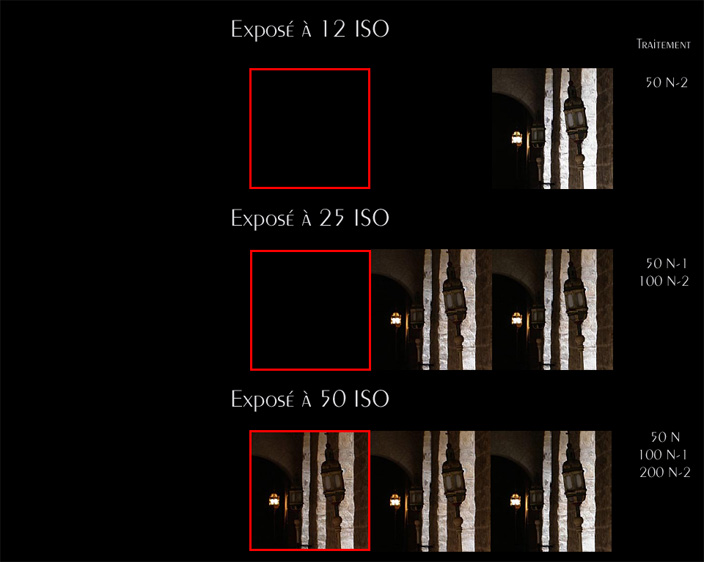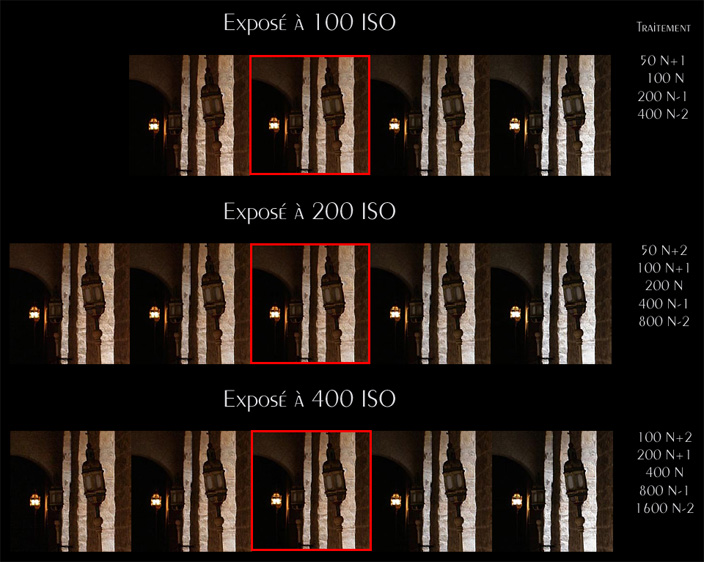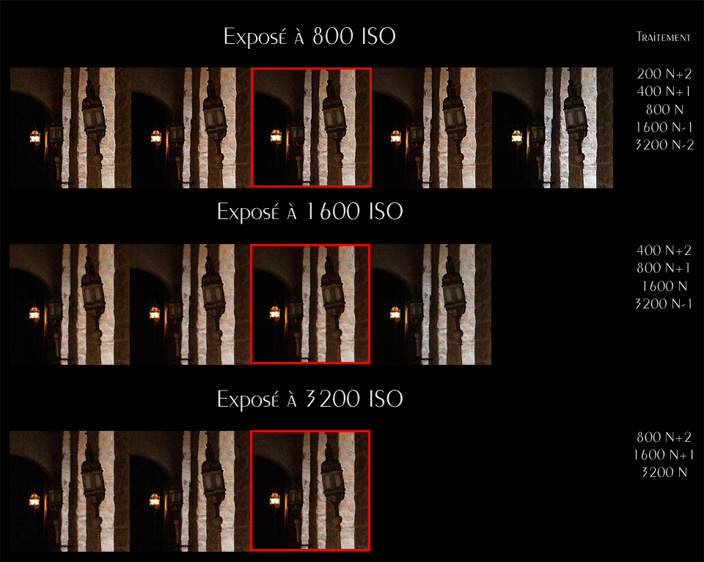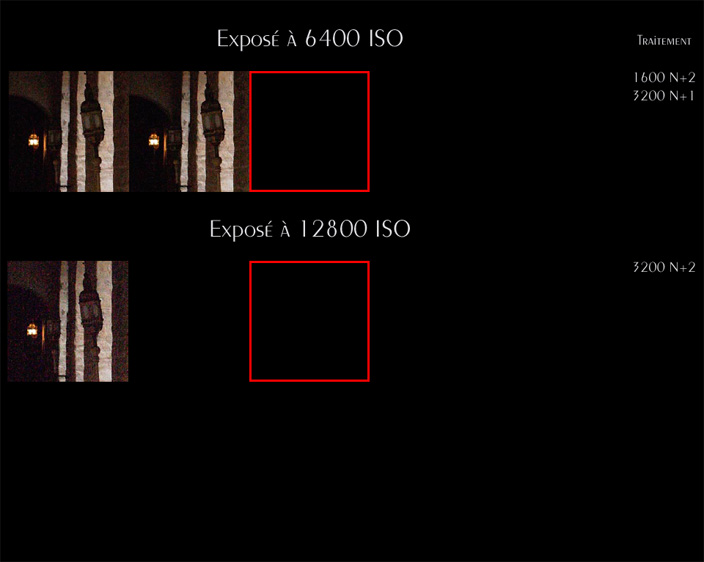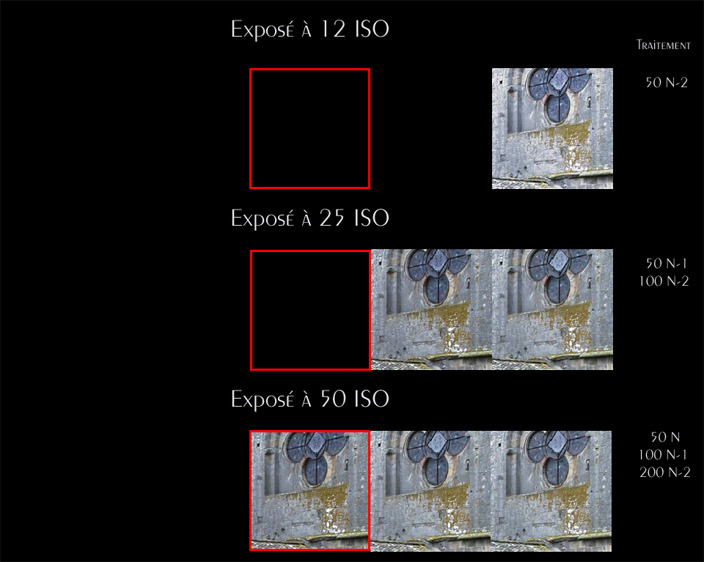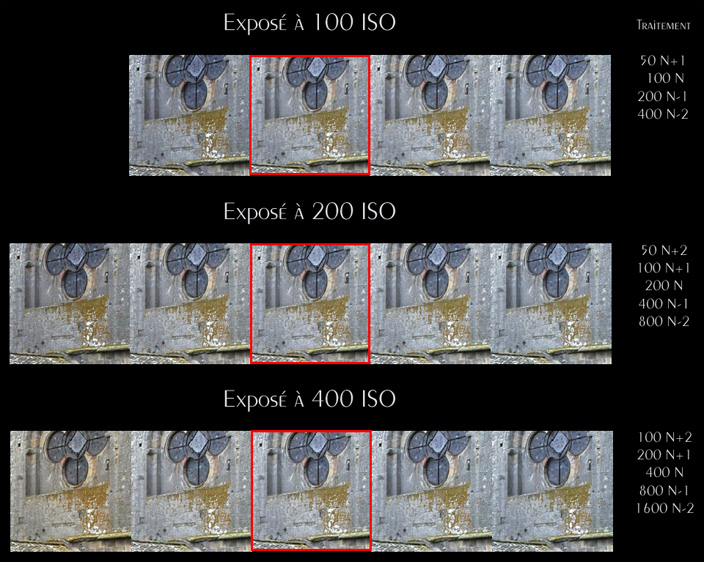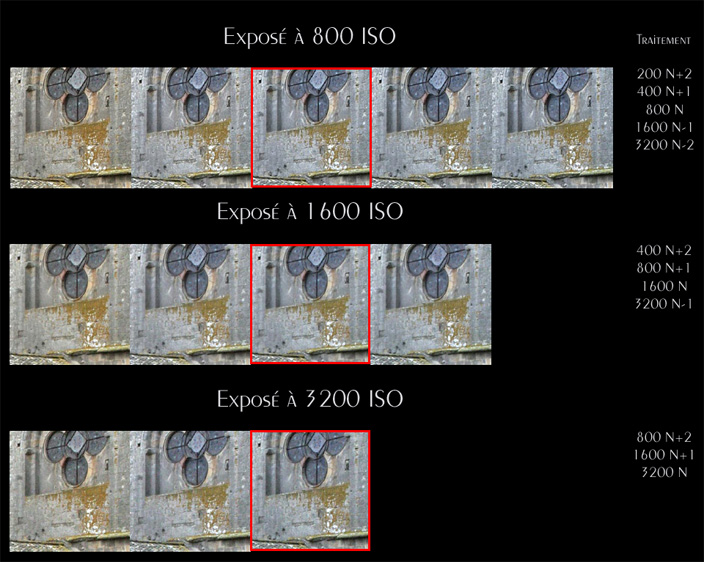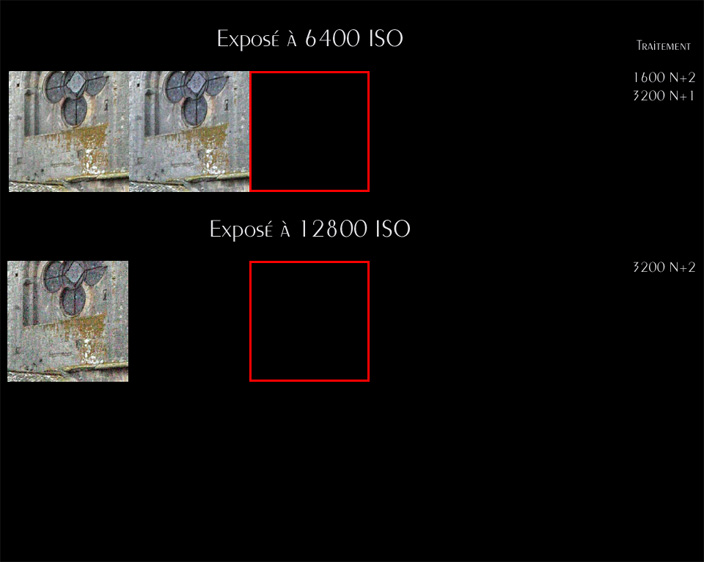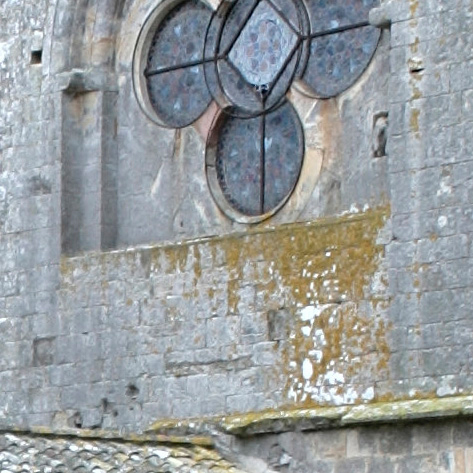|
|
|||||||||||||||||||||||||||
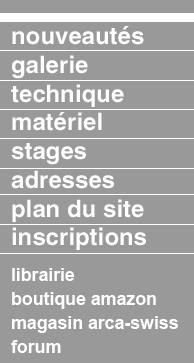
|
|
Digital sensitometry
|
|||||||||||||||||||||||||
|
|
|||||||||||||||||||||||||||
l'auteur
|
ConclusionsDear reader, you can easily judge by yourself on all those images. No need of a long demonstration, but a few additional informations might be useful. The images are published in 72 dpi. The size of the whole image would be 120x180cm at 72 dpi, samples presented here cover 4x4 cm at 300 dpi (standard resolution for printing books). It is easy to see that N-1 and N-2 post-processing are not really interesting. It is of course possible to correct for the 'digital saturation' effect by manipulating the histogram, but most details in highlights are lost. Other post-processing setting : N, N+1, N+2 are really impressive. No tonal drift, no chromatic drift in the presented test images, for which only the global histogram of the 'L' layer in the LAB format has been adjusted. No visible loss or resolution can be seen. It is extremely difficult to distinguish between ISO 100 and ISO 200 settings. ISO 50 is not so bad although less flexible in post-processing. ISO 400 and ISO 800 are really impressive, here the silicon detector leaves conventional 400 and 800 ISO film far behind, mostly for the ease and flexibility of digital post-processing. As far as image resolution is concerned, it is another story. For sure 35mm film can no longer compete, (goodbye to 35 mm film ?? ;-) ; in medium format on rollfilm 6x8-6x9 we could in principle use some pushed 800 ISO film but who would like to do this ? As far as ISO 1600 and ISO 3200 are concerned, the achievable image quality is still very impressive, and image rendition by post-processing is unknown with film, the resolution is acceptable (no possible comparison with film however), the characteristic curve is good and cannot be blamed, of course the shadows are a bit blurred, but we one can live with this minor defect. As far as the admissible tonal range is concerned, we measured it with the Flashmeter-VI® and got a range of 6 f-stops, not taking the sky into account. In real situations, everything goes smoothly for all ISO settings ; N and N+1 post-processing are OK, and according to the initial settings N+1, may be acceptable and N+2 rather bad. Now we clearly see the interest of plotting all possible characteristic curves. Reminder : acceptable tonal range is 6 f-stops; possible adjustments in ISO settings 4+2 stops, additional post-processing corrections 4 f-stops. Those rather optimistic predictions have to be reduced after looking at real world images; a tonal range of 6 f-stops is actually recorded, 4 f-stops in adjusting ISO settings are actually available and very useful. Provided that we may accept N, N-1 and N-2 post-processing, eventually we have many degrees of freedom. Of course we may regret that pushing the post processing to ISO 1600 or 3200 does not deliver an image structure as pleasant as what we get with a classical Recording® black and white film in the same conditions, but we should always keep in mind that digital cameras and sensors like the Canon 1DsMkII only work in colour, finally they actually are, and will remain, a production tool not a fine-art tool ;-);-) One may object that these tests are a bit absurd and irrealistic, why anybody would actually use all those ISO settings and post-processing procedures? Well, simply we wanted to push the system to its limits; now we know where they are and how we could use them just in case, but above all we have satisfied our curiosity. Soon on galerie-photo.com another article about a comparison of image resolution between the Canon 1Ds MkII and good scans of colour slide film in 6x8 and 4"x5". HG - 2005
you can read also : digital sensitometry (part I)
dernière modification de cet article : 2005
|
||||||||||||||||||||||||||
|
|||||||||||||||||||||||||||

